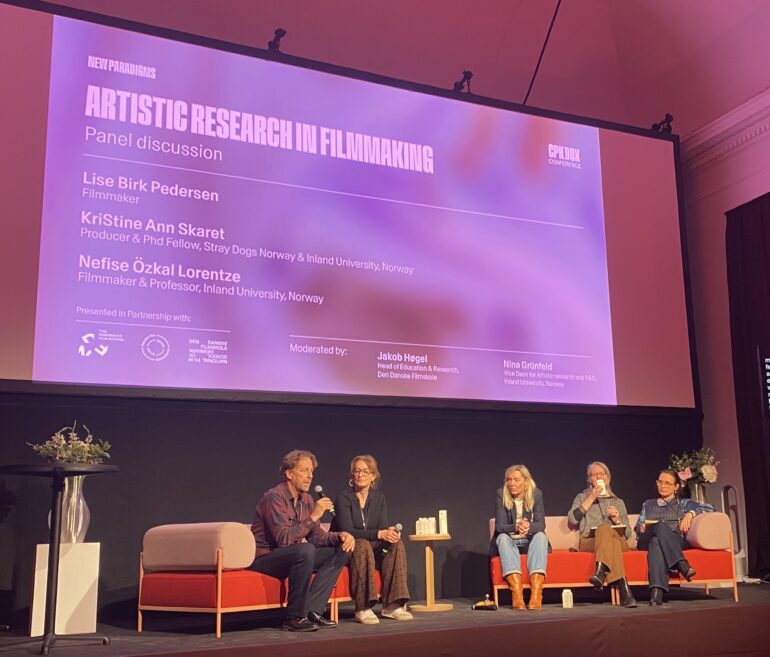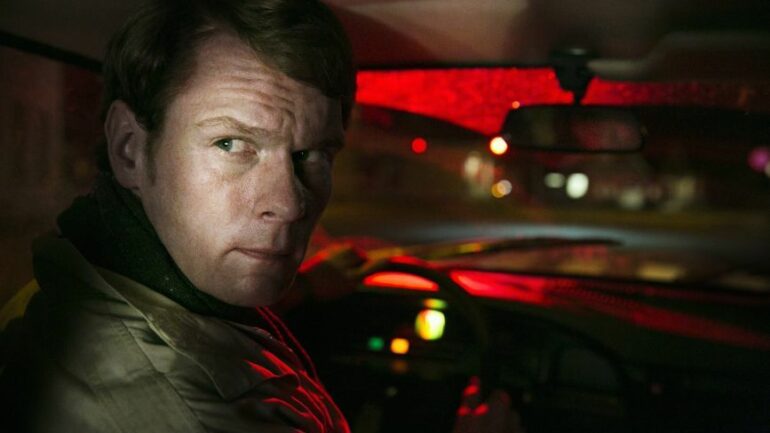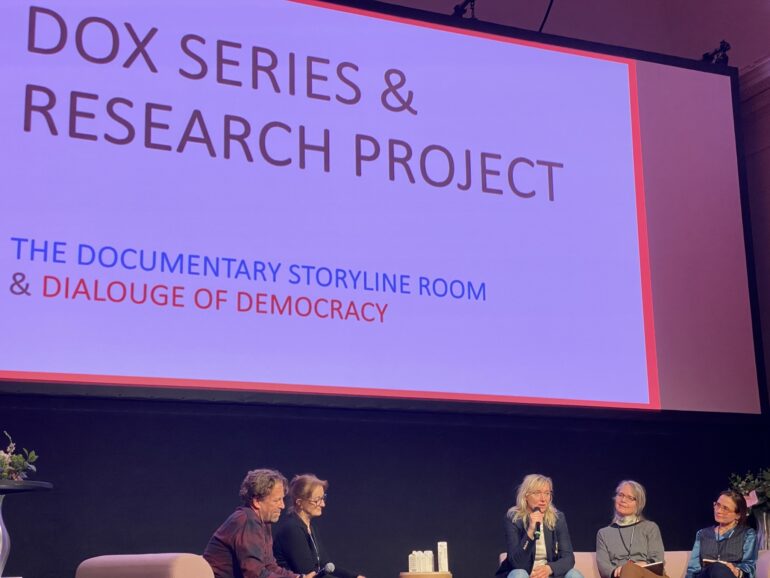WRITTEN BY: Eva Novrup Redvall
The 3-year project aims to strengthen artistic research in Nordic filmmaking. Future collaboration could include Finland and Sweden.
What is artistic research good for? The question was raised during a panel debate at this year’s CPH:DOX in Copenhagen, organised by The National Film School of Denmark and the Norwegian Film School. Based on funding from The Foundation for Danish-Norwegian Cooperation, the two film schools are in the process of conducting a 3-year joint project exploring how artistic research can benefit filmmakers.
A first workshop was held in Norway last spring, bringing together teachers from the two film schools working with artistic research (which in the Nordic context is discussed as KU or KUV projects on “kunstnerisk udviklingsarbejde”). A second two-day workshop took place in Copenhagen before this year’s CPH:DOX, with some of the reflections and findings being presented at an industry panel as part of the CPH:CONFERENCE programme on new paradigms in documentary filmmaking.
The panel brought together filmmakers Nefise Özkal Lorentzen, Lise Birk Pedersen, and KriStine Ann Skaret, Professor and Vice Dean of Artistic Research from the Norwegian Film School Nina Grünfeld, and Head of Education and Research at the Danish Film School Jakob Høgel to discuss current experiences of developing new film productions through integrating an artistic research agenda and what can be learned in this regard.
What is artistic research?
As discussed at the workshop and panel, artistic research can take many different forms, but the main purpose is to conduct research with the process of art/film-making at the centre, leading to new productions or new knowledge about specific approaches. This is often practice-based research with filmmakers doing research around their own filmmaking, but there can also be wider perspectives and collaborations.
Since artistic research became a focus in the Danish context with grants for specific KUV projects in 2013, the film school faculty and filmmakers have e.g. investigated working with transmedia world building, experimental filmmaking, the relations between ethics and artistic freedom, and new narratives in the climate crisis.
Christina Rosendahl is one of the filmmakers who has conducted a KUV project at the Danish Film School. Her project explored how to move between open and closed approaches in the brainstorming stages of developing new film ideas, based on her positive experiences of working more collaboratively on the feature films The Idealist (Idealisten) and The Good Traitor (Vores mand i Amerika). The inspiration for this investigation built partly on ideas from John Cleese on creativity, partly on the Greenlandic tradition of the “kaffemik”, which brings people together for several hours over coffee.
Rosendahl wanted to explore the benefits of creating a similar gathering of film teams, based on main collaborators meeting for joint and structured idea generation sessions during the early stages of development. The findings from the project have been presented at several industry events, and “The Rosendahl method” at a workshop in Aarhus in late April.
Collaborating on teaching as well as research
While having the possibility to get KUV projects funded at Danish art schools has only existed for a little more than a decade, Norway has prioritised artistic research since 1995. The law for Norwegian universities and art academies states that, besides offering educational programmes, institutions like The Norwegian Film School should carry out artistic research on a high international level and share these findings in teaching and beyond. In Norway, this means that there is the possibility to do a PhD in artistic research, something which is not yet possible at the Danish Film School.
The difference between the Norwegian and Danish systems was one of the reasons why Nina Grünfeld and Jakob Høgel found it productive to build bridges and explore how to be stronger in the field of artistic research by teaming up.
From the perspective of the Danish Film School, it seemed productive for Høgel to build on the Norwegian traditions and the PhD work done.
“As of now, Danish artistic research is based on individual grants, and only conducted by a rather small group of researchers with limited funding. We started looking for inspiration elsewhere, and found the work and structures around artistic research at the Norwegian Film School to be very interesting. We reached out, and with generous funding from The Foundation for Danish-Norwegian Cooperation we have now been able to be colleagues in this field, even though we are based at different schools.”
Nina Grünfeld adds that the two film schools have a long history of collaboration between them, , and it made sense to extend this.
“Our schools already collaborate closely, for instance with annual meetings on educational, pedagogic and didactic issues. Why not broaden the scope to also include research? For us, it is great to have ongoing conversations around this topic based on our ambition to be the leading Norwegian competence centre for not only film education, but also research. It is valuable to us to share knowledge and build even stronger networks around this with our Danish colleagues.”
Dissertations – or other forms of dissemination
In time, Grünfeld and Høgel hope to also reach out to partners in Sweden and Finland. They argue that there is a particular approach to artistic research in the Nordics, which is more practice-based than e.g. the Anglo-Saxon tradition of writing long dissertations.
How to communicate and share findings from the current research project was widely discussed at the workshop as well as the panel, where several participants argued against mostly communicating findings in writing. Instead, one could focus on integrating research in teaching, organising industry workshops, or working with video essays.
The CPH:DOX panel presented three quite different approaches to artistic research in documentary filmmaking, like exploring new ways of making observational documentaries in close collaboration with specific communities, or using different dramaturgical models and methods during development. Lise Birk Pedersen presented thoughts around the creation of a so-called “Storyline room” for her forthcoming documentary series following seven young Danish politicians over a period of ten years.
Insights from schools and students to the screen industries
All panel participants seemed eager to share the experiences from their artistic research. There will be a third and final project workshop in Norway next year with the opportunity to do this, and a main ambition is to also continuously have the project findings move outside the film school setting through faculty and students working in the industry.
As noted by Høgel:
“It can be hard to find time for reflection and research in the screen industries, both as teachers, students, and industry practitioners. Artistic research is a fruitful space for asking important questions about filmmaking. By focusing on this in the film school setting, we hope to make students ask critical questions and use the research findings in their filmmaking practice – and then the students bring this way of working and thinking into the Nordic screen industries.”
For information on the CPH:DOX seminar: CLICK HERE.
For more information on artistic research at the National Film School of Denmark: CLICK HERE.
For more on artistic research at the Norwegian Film School: CLICK HERE. (Only available in Norwegian).



